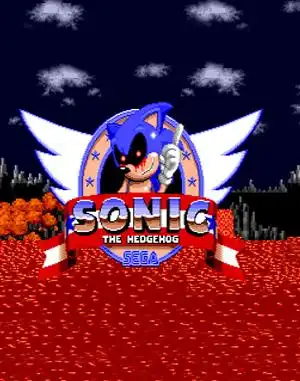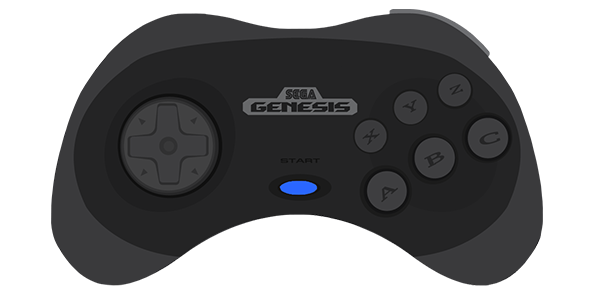Remember that distinct "SEGA!" shout that blasted from your TV speakers? For many of us, that sound was the gateway to a world of lightning-fast platforming, blue hedgehogs, and mad scientists. While today we have countless ways to play classic Sonic – ports, remakes, emulation, and a dizzying array of clone consoles – there's something uniquely special about the experience of An Ordinary Sonic Sega Genesis.
It wasn't fancy. It didn't have HDMI outputs or wireless controllers (unless they were third-party abominations). It was just the console, the power brick, the AV cables, and that wonderfully clunky, yet reliable, three-button controller. And plugged into it, often, was the cartridge that defined a generation: Sonic the Hedgehog.
Back to the Basics: The Genesis Console
Let's be honest, the Sega Genesis (or Mega Drive, depending on where you lived) was a beast. Its design was sleek, black, and had a certain '90s cool factor. But beyond the looks, it was the hardware that mattered. The Motorola 68000 processor hummed along, pushing pixels faster than the competition, perfectly suited for the kind of speed Sonic demanded.
Holding that standard three-button controller felt just right. The D-pad was responsive, the A, B, and C buttons had a satisfying click. It wasn't overloaded with inputs; it was simple, intuitive, and built for action. This tactile connection to the game was a crucial part of the original experience.
The Game Itself: Sonic the Hedgehog
Then there was the game. Sonic the Hedgehog wasn't just a game; it was a cultural phenomenon. Dropping you into Green Hill Zone with its vibrant checkerboard hills and catchy, upbeat music, it immediately set a tone of speed and excitement.
Unlike the slower, more methodical pace of its main competitor, Sonic was all about momentum. Rolling down hills, zipping through loop-de-loops, collecting rings with reckless abandon – it was a pure adrenaline rush. Dr. Robotnik (or Eggman, depending on your era) and his robotic animal creations provided the perfect foil, and the Chaos Emeralds offered a challenge beyond simply reaching the end of the level.
The level design felt fresh and dynamic, encouraging exploration and speed runs. Finding hidden paths, bouncing off springs, and mastering the spin dash (introduced in Sonic the Hedgehog 2, but the spirit was there from the start) were all part of the fun.
Why "Ordinary" Was Extraordinary
So, why wax poetic about "An Ordinary Sonic Sega Genesis"? Because that standard, original setup delivered an unfiltered, authentic experience.
- The Feel: The specific feel of the original controller, the way the game responded directly to its input without layers of emulation or wireless lag.
- The Visuals: Seeing the game on a CRT TV, with its inherent characteristics, is different from pixel-perfect scaling on an HD display. It's how it was meant to be seen.
- The Sound: Hearing the iconic soundtrack and sound effects through the console's audio output, often connected via simple RCA cables, has a distinct quality that emulation doesn't always perfectly replicate.
While modern options like the Sega Genesis Mini or official digital releases offer convenience and excellent emulation, and various clone consoles exist (some better than others, often with questionable emulation or controller quality, as seen in reviews), none perfectly replicate the feeling of plugging in that original black box and booting up the cartridge.
Reliving the Classic Today
Experiencing An Ordinary Sonic Sega Genesis today typically means finding the original hardware. Retro game stores, online marketplaces, and maybe even your own attic are potential sources. Hooking it up might require an old TV or a specific adapter for modern displays, adding another layer of retro authenticity (or hassle!).
For those who can't go full vintage, the Sega Genesis Mini comes remarkably close in terms of emulation quality and controller feel, though it's still a recreation. Official digital releases on platforms like Steam or console online stores offer convenience, often with added features like save states, but lack the physical connection to the original machine.
Ultimately, the magic of An Ordinary Sonic Sega Genesis lies in its simplicity and its role as the foundation for a beloved franchise. It was the standard, and it set an incredibly high bar.
Frequently Asked Questions
Q: Is playing Sonic on a Sega Genesis clone console the same as the original? A: Not usually. While many clones include Sonic games, the emulation quality, controller feel, and audio output often differ significantly from the original hardware, providing a less authentic experience.
Q: Can I play my old Sonic cartridges on a modern TV? A: Yes, but you'll likely need an adapter (like an RCA to HDMI converter) to connect the Genesis's composite output to your modern TV's HDMI input. The picture quality might vary.
Q: Where can I find An Ordinary Sonic Sega Genesis console today? A: You can often find original Sega Genesis consoles at retro game stores, online marketplaces like eBay, or sometimes at flea markets and garage sales.
Q: Are there good modern ways to play classic Sonic if I don't have a Genesis? A: Yes, the Sega Genesis Mini console offers excellent emulation and comes with classic controllers. Official digital releases on various platforms (PC, modern consoles) are also available and often include save states and other features.
Whether you dust off an old console or seek one out, revisiting An Ordinary Sonic Sega Genesis is a fantastic way to reconnect with the roots of a gaming icon and experience the pure, unadulterated joy of 16-bit speed.


